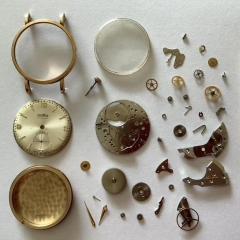Alum& PVD coating
-
Recently Browsing
- No registered users viewing this page.
-
Topics
-
Posts
-
By HectorLooi · Posted
He took photos of every page with enough resolution to see every word. What a kind soul! 🥰 -
This may help, suggest covering with plastic film when removing and re-installing if your tweezer skills are not 100% yet 1971-Citizen-Technical-Information-03-Watch-Movement.pdf
-
It all depends on the movement but if you've got to get a new arbor then you'll need to know that anyway.
-
I can't see how that would be cheaper as I help my local charity shops on a pro bono basis. But of more interest to me would be to understand how to work out the specification of a replacement balance given that the chance of being able to order the part from the company or OEM must be effectively zero.....
-






Recommended Posts